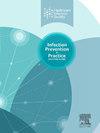Barriers to hand hygiene practice among healthcare workers in health centres of Kirkos and Akaki Kality sub-cities, Addis Ababa, Ethiopia: a qualitative study
IF 1.9
Q3 INFECTIOUS DISEASES
引用次数: 0
Abstract
Background
Hand hygiene is an easy step to reduce healthcare-acquired infections, and improve patient safety. Major progress in facility accessibility was made during the coronavirus disease 2019 (COVID-19) pandemic, and this led to greater adherence to hand hygiene practices. However, handwashing practices have now returned to the pre-COVID-19 era. Most of the studies that have investigated hand hygiene adherence are quantitative. As such, this study aimed to explore barriers to hand hygiene practice in the health centres of Kirkos and Akaki Kality sub-cities in Addis Ababa, Ethiopia.
Methods
Twenty-four healthcare professionals employed at the aforementioned health centres were interviewed using the key informant interview method. Data were analysed using a qualitative content analysis technique.
Results
Based on the findings, there were three main categories of barriers to hand hygiene practice: barriers related to individuals (including three sub-categories: lack of knowledge and skill, improper attitude, and poor attention and negligence of healthcare workers); leadership barriers (including two sub-categories: lack of dedicated staff and low attention of leaders); and institutional barriers (including three sub-categories: inappropriate infrastructure and lack of resources, shortage of water, and high work load and staff turnover).
Conclusion
There were several reasons why hand hygiene guidance was not followed. Hand hygiene barriers can be minimized by displaying colour-coded notice boards, making washing facilities easily accessible, monitoring the availability of soap, offering training, and providing accurate evidence about the need to enhance hand hygiene.
埃塞俄比亚亚的斯亚贝巴Kirkos和Akaki Kality副城市卫生中心卫生工作者手部卫生习惯的障碍:一项定性研究
背景手部卫生是减少医源性感染和提高患者安全的简便步骤。在 2019 年冠状病毒病(COVID-19)大流行期间,在设施无障碍方面取得了重大进展,这促使人们更加重视手部卫生。然而,现在的洗手方法已经回到了前 COVID-19 时代。大多数调查手部卫生依从性的研究都是定量研究。因此,本研究旨在探讨在埃塞俄比亚亚的斯亚贝巴的 Kirkos 和 Akaki Kality 子城市的医疗中心中手部卫生实践的障碍。结果根据调查结果,手卫生实践的障碍主要有三类:与个人有关的障碍(包括三个子类别:缺乏知识和技能、态度不端正、医护人员不重视和疏忽);领导障碍(包括两个子类别:缺乏专职人员和领导不重视);机构障碍(包括三个子类别:基础设施不适当和缺乏资源、缺水、工作量大和人员流动)。手部卫生的障碍可以通过展示彩色编码的告示板、方便使用清洗设施、监测肥皂的供应情况、提供培训以及就加强手部卫生的必要性提供准确的证据来尽量减少。
本文章由计算机程序翻译,如有差异,请以英文原文为准。
求助全文
约1分钟内获得全文
求助全文
来源期刊

Infection Prevention in Practice
Medicine-Public Health, Environmental and Occupational Health
CiteScore
4.80
自引率
0.00%
发文量
58
审稿时长
61 days
 求助内容:
求助内容: 应助结果提醒方式:
应助结果提醒方式:


